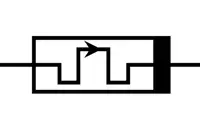Electronics News
Archive : 21 October 2015 год
 Pressure Profile Systems (PPS) has announced a major investment in a five-year research partnership with the University of Strathclyde, worth around £300,000.
Pressure Profile Systems (PPS) has announced a major investment in a five-year research partnership with the University of Strathclyde, worth around £300,000.
During the first 12-month phase of the partnership, three co-funded PhD/EngD students will be recruited to work on sensor-based projects, jointly with PPS and Strathclyde research. The second phase will expand the partnership into other research fields, including Biomedical Engineering, Design Manufacture and Engineering Management and Materials Research.
Dr. Jae Son, founder and CEO of PPS, said: “We plan to establish a talented team of researchers to investigate technology transfer opportunities from our joint research and enable the commercialisation of new, cutting-edge, PPS-tactile sensing based products."
The partnership will be managed by the Centre for Ultrasonic Engineering, which is part of the Institute for Sensors, Signals and Communications in Strathclyde’s Department of Electronic and Electrical Engineering.
The Centre’s director, Professor Anthony Gachagan, said: “Our collaboration with PPS empowers the University of Strathclyde to offer some of its brightest researchers exposure to cutting-edge innovation, knowledge exchange and internationalisation opportunities.”
PPS and the University of Strathclyde intend to commercialise the research from the partnership into new products through UKRC, Innovate UK, EU and Scottish Government grant schemes.
Pic: The University of Strathcltde's Technology and Innovation Centre
Author
Tom Austin-Morgan
Source: www.newelectronics.co.uk
 Researchers funded by the Swiss National Science Foundation have created an electronic component that could replace flash storage. This memristor could also be used one day in new types of computers.
Researchers funded by the Swiss National Science Foundation have created an electronic component that could replace flash storage. This memristor could also be used one day in new types of computers.
The principle of the memristor was first described in 1971, as the fourth basic component of electronic circuits (alongside resistors, capacitors and inductors). Since the 2000s, researchers have suggested that certain types of resistive memory could act as memristors and HP and Intel have entered into a race to produce a commercialised version.
“Memristors require less energy since they work at lower voltages,” explained Jennifer Rupp, professor in the Department of Materials at ETH Zurich. “They can be made much smaller than today’s memory modules, and therefore offer much greater density. This means they can store more megabytes of information per mm2.”
Along with her colleague, chemist Markus Kubicek, Prof Rupp has built a memristor based on a slice of perovskite 5nm thick. She claims that her component has three stable resistive states. As a result, it can not only store the 0 or 1 of a standard bit, but can also be used for information encoded by three states – the 0, 1 and 2 of a ‘trit’.
“Our component could therefore also be useful for a new type of IT that is not based on binary logic, but on a logic that provides for information located ‘between’ the 0 and 1,” continued Prof Rupp. “This has interesting implications for what is referred to as fuzzy logic, which seeks to incorporate a form of uncertainty into the processing of digital information. You could describe it as less rigid computing.”
Another potential application is neuromorphic computing, which aims to use electronic components to reproduce the way in which neurons in the brain process information. “The properties of a memristor at a given point in time depend on what has happened before,” explained Prof Rupp. “This mimics the behaviour of neurons, which only transmit information once a specific activation threshold has been reached.”
Primarily, the researchers at ETH Zurich have characterised the ways in which the component works by conducting electro-chemical studies. “We were able to identify the carriers of electrical charge and understand their relationship with the three stable states,” said Prof Rupp. “This is extremely important knowledge for materials science which will be useful in refining the way the storage operates and in improving its efficiency.”
Author
Tom Austin-Morgan
Source: www.newelectronics.co.uk

